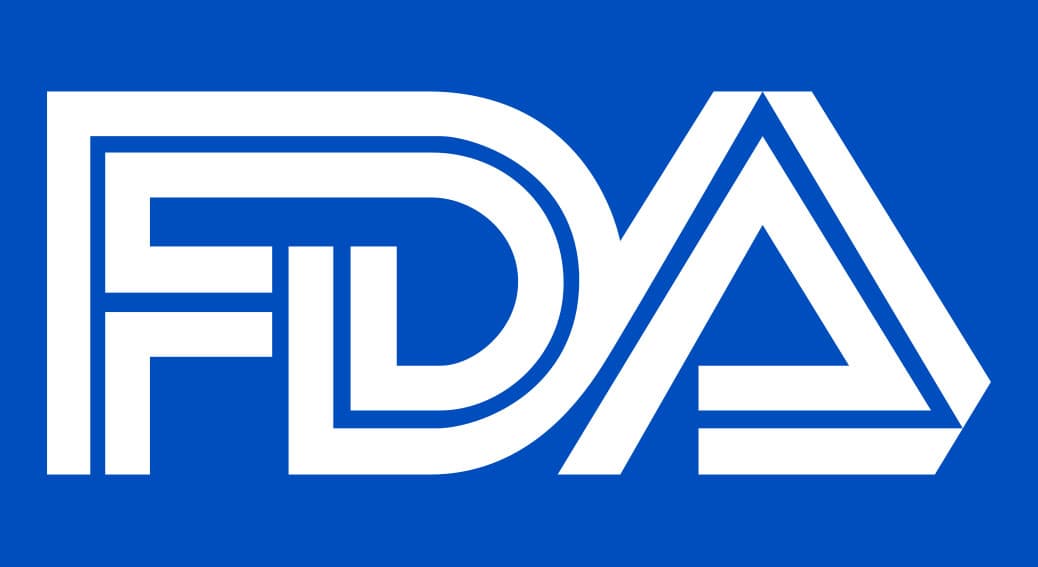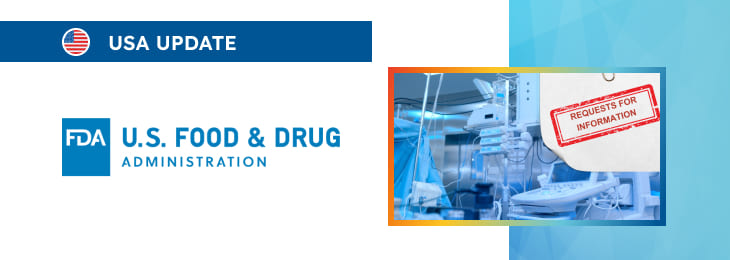The new article provides further clarifications regarding requests for information as provided under the existing legal framework.

Table of content
The Food and Drug Administration (FDA or the Agency), the US regulating authority in the sphere of healthcare products, has published a guidance document dedicated to requests for information concerning medical devices. The document provides an overview of the applicable regulatory regiments, as well as additional clarifications and recommendations to be taken into consideration by medical device manufacturers and other parties involved in order to ensure compliance.
At the same time, provisions of the guidance are non-binding in their legal nature, nor are they intended to introduce new rules or impose new obligations. Moreover, the authority explicitly states that an alternative approach could be applied, provided such an approach is in line with the relevant legislation and has been agreed with the authority in advance.
Submitting a 513(g) Request for Information
According to the guidance, when submitting a 513(g) Request for Information, it is crucial to clearly identify the submission as such. Although section 745A(b) of the FD&C Act does not mandate that 513(g) submissions adhere to the eCopy requirements or be submitted solely in electronic format, the FDA strongly recommends utilizing electronic submission methods for greater efficiency.
The preferred methods include submitting the request as an eCopy or using the voluntary electronic Submission Template and Resource (eSTAR) specifically designed for 513(g) submissions, which is available on the FDA’s website. However, if these electronic methods are not feasible, a complete paper copy may also be submitted.
For detailed guidance on eCopy submissions, stakeholders can refer to the FDA’s guidance document titled “eCopy Program for Medical Device Submissions”. Additionally, it is recommended to include the CDRH Premarket Review Submission Cover Sheet when submitting to the Center for Devices and Radiological Health (CDRH) or the Center for Biologics Evaluation and Research (CBER).
This cover sheet helps ensure that the submission is correctly logged and promptly routed to the appropriate review group.

Submission Channels
If submitting the 513(g) request to CDRH, the FDA advises that the submission package be sent electronically via the CDRH Portal (formerly known as the CDRH Customer Collaboration Portal). Once submitted through the CDRH Portal, the package will be received by the CDRH Document Control Center (DCC).
Alternatively, if electronic submission is not possible, the submission package can be mailed to the CDRH DCC. The current mailing address for the CDRH DCC is available on the FDA’s eCopy Program for Medical Device Submissions webpage.
For products regulated by CBER, submission packages should be sent electronically through the FDA Electronic Submission Gateway. If necessary, submissions can also be sent via the CBER submission email inbox, with a maximum file size of 150 MB.
Alternatively, submission packages can be mailed to the CBER DCC. Further details on the FDA Electronic Submission Gateway and the current mailing address for the CBER DCC can be found on CBER’s Regulatory Submissions website.
User Fees
As per Section 738(a)(2)(A)(ix) of the FD&C Act, the FDA is required to collect user fees for 513(g) Requests for Information. It is important to note that the FDA will not begin the review of a 513(g) request until all fees have been paid in full, including any outstanding establishment registration fees.
Once the FDA has received the necessary fees and the 513(g) submission, the review process will commence from that date. If a submission does not meet the criteria of a 513(g) Request for Information, meaning it does not seek information regarding the classification of a device or the regulatory requirements under the FD&C Act, it is not governed by Section 513(g).
In such cases, the FDA does not have an obligation to respond to the request, and any user fee submitted with such a request will be refunded. For additional details on user fees related to 513(g) requests, stakeholders should refer to the guidance document titled “User Fees for 513(g) Requests for Information”.
Contents of a 513(g) Request for Information
As further explained by the authority, a complete 513(g) Request for Information should include several key components to ensure a thorough and accurate review by the FDA:
- Cover Letter: The cover letter should clearly identify the request as a “513(g) Request for Information” and include:
- The date of the request.
- The name of the device.
- Specific questions regarding the device’s classification and/or regulatory requirements.
- The requester’s contact information, including name, address, telephone number, fax number, and email address.
- The signature of the 513(g) requester.
- Description of the Device: This section should provide a detailed description of the device, including:
- A list of materials and components used in or with the device.
- Photographs, engineering drawings, or samples of the device.
- A summary of the device’s operational principles, such as whether it contains software or firmware.
- A description of the type and amount of energy used or delivered by the device.
- A description of similar devices currently in commercial distribution in the United States, if available.
- Device Uses: This section should outline the intended use of the device, including:
- The disease or condition the device is intended to treat or diagnose.
- Whether the device is for prescription or over-the-counter use.
- The part of the body or type of tissue the device interacts with.
- The frequency of use.
- The physiological purpose of the device, such as whether it removes water from blood or transports blood.
- The target patient population.
- The environment of use.
- Any other labeling information related to patient use.
- Labeling: The request should include any proposed labeling or promotional materials for the device, as well as any labeling or promotional material from a similar, legally marketed device, if available. If such materials are not available, this should be noted in the cover letter.
Additions to a 513(g) Request for Information
Once a 513(g) Request for Information has been submitted and the associated user fee paid, it is not permissible to modify the request by adding new questions, uses, or technologies.
Any such additions would be considered a new 513(g) request and would require an additional user fee. The FDA would respond to this new request separately.
Responding to a 513(g) Request for Information
Upon receiving a complete 513(g) Request for Information, the FDA intends to issue a response within 60 days.
The response will be based solely on the information provided in the request and will generally fall into one of the following categories:
- Device Identification:
- The product appears to be a device as defined by Section 201(h) of the FD&C Act.
- It appears to be an unclassified pre-amendments device type, making it subject to the 510(k) requirement.
- It appears to be a post-amendments device type that has not yet been reclassified, thus subject to the PMA requirement.
- It appears to be a classified device type, in which case the FDA will identify the generic type of device, the class, and the type of submission required for marketing the device.
- Non-Device Identification:
- The product does not appear to be a device but may be another type of product regulated by the FDA, in which case the FDA will provide contact information for the appropriate regulatory component.
- The product does not appear to be a product for which the FDA has jurisdiction.
- The product is a combination product, and the appropriate Center for primary jurisdiction is unclear. The requester is encouraged to contact the Office of Combination Products for further discussion.
Incomplete Requests
If the FDA determines that a 513(g) Request for Information lacks sufficient information to provide a response regarding classification and/or applicable requirements, the agency will contact the submitter to request additional information. If the FDA does not receive a response within 30 days, the 513(g) request may be considered withdrawn, and the FDA may issue a notice of withdrawal.
Conclusion
In summary, the present FDA guidance describes in detail specific criteria requests for information should meet in order to be eligible for review and also explains in detail the applicable processes and procedures.
How Can RegDesk Help?
RegDesk is an AI-powered Regulatory Information Management System that provides medical device companies with regulatory intelligence for over 120 markets worldwide. It can help you prepare and publish global applications, manage standards, run change assessments, and obtain real-time alerts on regulatory changes through a centralized platform. Global expansion has never been this simple.

